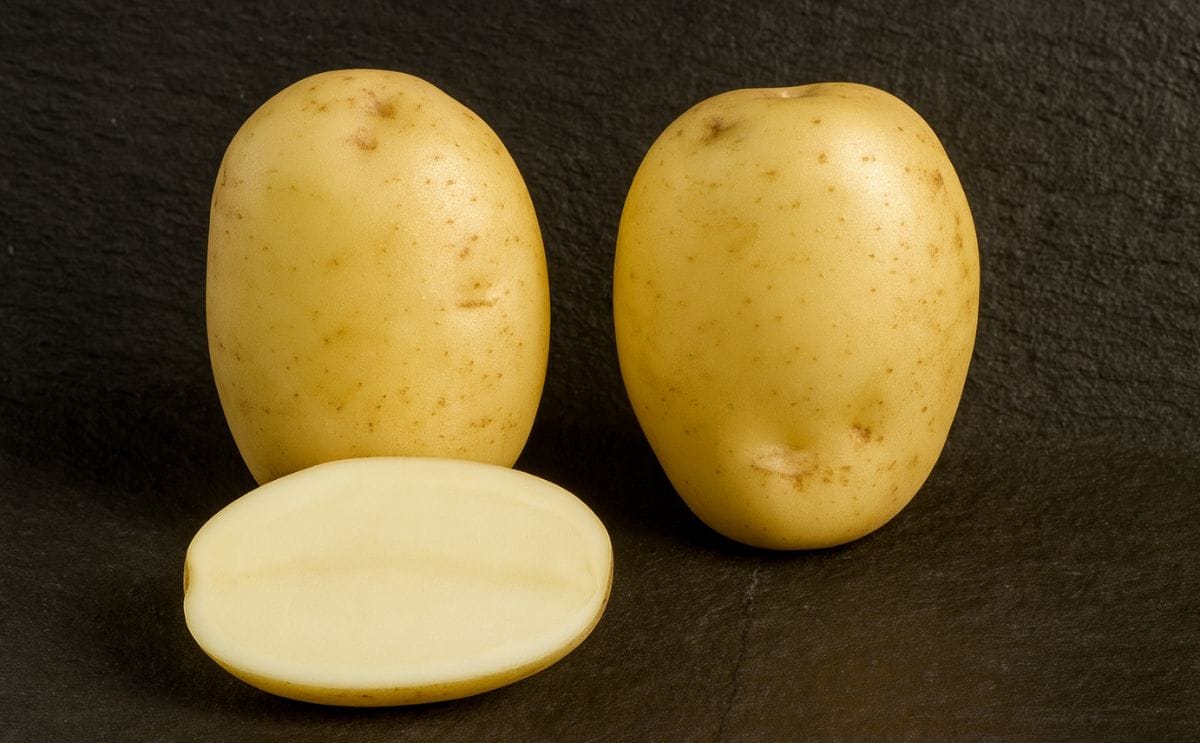Maris Piper (Courtesy: Potato Council Variety Database / SASA)
The Quest to Engineer the Perfect Potato

A genetically modified potato that could resist destructive blight, defend itself against parasitic worms, avoid bruising, and cut down on the accumulation of a suspected carcinogen during cooking would be worth many billions of dollars per year to potato producers across the world.
It could also serve as a model technology for addressing issues that affect many different crops and are increasingly likely to cause concerns about global food security as the population grows and the world’s climate becomes more unpredictable.
This mega-resilient potato is the goal of a new project officially launched by researchers in the United Kingdom this week. If they are successful, this would be the first potato to have all these traits, each of which has already been demonstrated in previous genetically modified versions of popular potato varieties.
The five-year endeavor will be led by Jonathan Jones, a scientist at Sainsbury Lab in the U.K. and one of the world’s leading experts on the genetics of plant diseases.
Professor Jonathan Jones

Jonathan Jones
The five-year research project will be led by Professor Jonathan Jones, a scientist at the Sainsbury Lab (TSL) in the United Kingdom
Jonathan Jones aims to begin work this autumn introducing three genes which confer resistance to late potato blight, two genes that confer resistance to nematodes and a further three genes which switch off the production of asparagine and reducing sugars (acrylamide, storability & frying colour) and polyphenol oxidase (bruising/darkening), into a Maris Piper potato.
Professor Jones said:
“We’re still some years away from our final crop. It would need to go through all the necessary approval processes.
If it passes those tests and if it is approved for planting, this potato could prevent many tonnes of pesticides and fungicides being sprayed on our land, increase yields and make a healthier crisp or chip.”.
The potato Jones is aiming for will contain three genes his group has shown to confer resistance to late blight and two genes researchers at the University of Leeds have found to block infestation by potato cyst nematodes. It will also have DNA the U.S. company J.R. Simplot used to engineer a potato variety, recently commercialized, that has fewer dark spots and contains less asparagine, a chemical that can cause the accumulation of a suspected carcinogen (acrylamide) during high-temperature cooking.
Jones’s group has already engineered a blight-resistant potato, using a single gene it cloned from one found in a wild potato plant. For a commercial product, though, a single resistance gene will not be enough, he says, because it would likely lead to the emergence of pathogen strains resistant to that gene. Jones says an important objective of this project is to test the hypothesis that “stacking” multiple resistance genes can safeguard against this danger. His group found all three genes in wild potatoes.
Potatoes are a key staple crop all over the world. In terms of direct human consumption, they are among the top foods globally, along with wheat and rice.
Since it would have benefits to consumers, farmers, and the environment, “it sounds like they are developing the perfect potato,” says Ewen Mullins, a senior researcher at Teagasc, Ireland’s agriculture research agency.
Mullins, who tests the environmental impact of novel plant breeding technologies, says the biggest challenges Jones’s group will face will probably not be technical.
The science has progressed so much in recent years that it’s now “relatively straightforward” to develop an organism with this many new traits, he says, though there will be an extensive safety and regulatory process afterward.
“The hard part is actually getting consumer acceptance for it,” Mullins says. That process, he adds, should ideally go on in parallel with the technology development.









